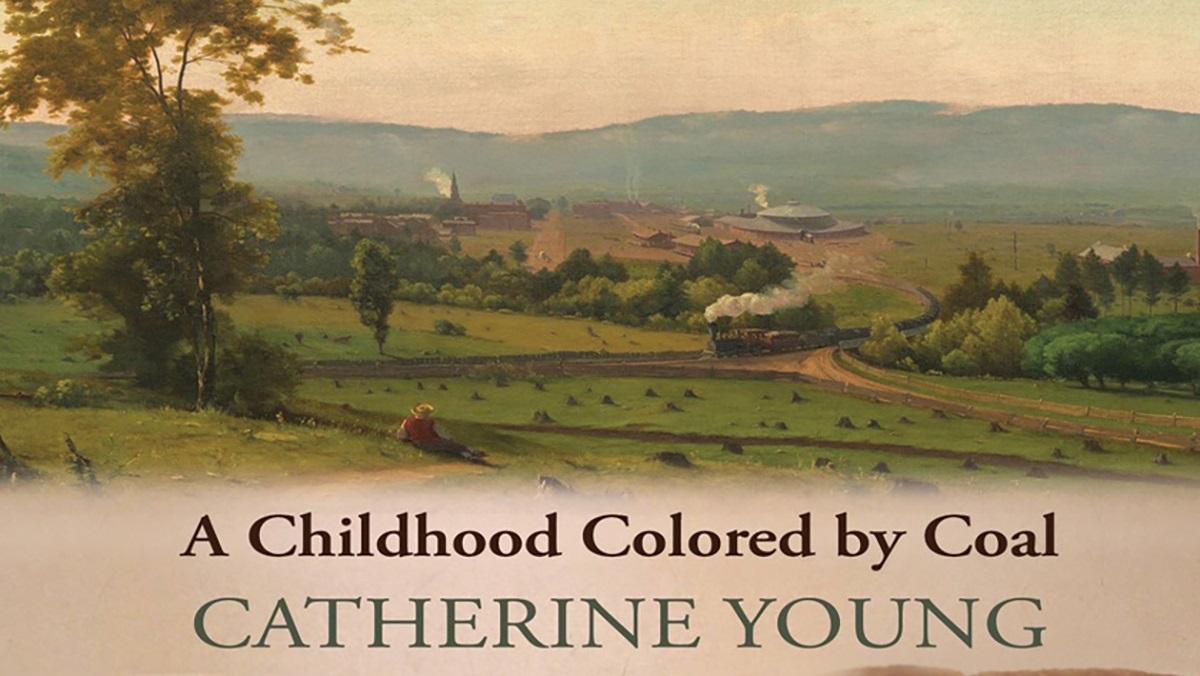Imagine living everyday of your childhood in a place where today’s Environmental Protection Agency would have declared the air quality “hazardous,” coding it in the dark red color of deoxygenated blood on its air pollution maps. That world in which Catherine Young grew up is richly detailed in her compelling, thought-provoking book, Black Diamonds, A Childhood Colored by Coal.
In this beautiful memoir of her childhood, Catherine Young, a Wisconsin writer, scientist, farmer, poet, and educator, lived and walked, holding her mother’s hand through her depressed neighborhood in the Lackawanna Valley in the 1960s. From the first page I was immersed in her dystopian world at the epicenter of northeastern Pennsylvania’s Appalachian anthracite coal country. Many pages left me covered with coal dust, ash, suffocating smoke, and sorrow. The author writes about her neighborhood: “…diesel locomotives of five railroads corralled us into distinct neighborhoods of our city. Coal trains pulsed through our sleep, their engines grinding and growling.” And “Ours was an ashen landscape veiled by gray air.”
Young survived to share her story. Most people did not live long, especially young boys and men working in the mines, factories, and on coal-powered trains. The author was born into hellfire. Mines were on fire below the streets of Scranton and, above ground, burning ten-story high culm hills spewed methane gas. A lethal combination of toxic sulfur smoke, acid rain, and gas caused chronic disease, early death, or long-term misery.
Young and her mother frequently walked up and down hills, broken sidewalks, cindered alleyways, along railroad tracks, and crossed the polluted orange Lackawanna River in all weather, to the grocery store, church, school, and visiting relatives. Despite her hardships, Young shares loving memories of her proud Italian and German immigrant relatives, who, though economically poor, were culturally rich, making the most of meager resources.
Throughout the book, she dreams of a life in an idyllic Garden of Eden, inspired by George Inness’s 1856 painting, The Lackawanna Valley, (shown on the book cover) though she considers the scene a mythical depiction. “I longed to be in a landscape as beautiful as I perceived the Lackawanna Valley in the painting to be—wished for my own landscape to look like that once more—if indeed it ever did.” Her poetic narrative transported me from an “abandoned land of desperate people in poverty with nowhere to go,” to the soft green and golden-brown hues of her valley framed by the bluish-tinged Pocono Mountains, as it must have been before the rapacious environmental decimation of the industrial revolution. The stark contrasting images of the peaceful verdant valley of the 1850s and the barren industrial wasteland of the 1950s awaken the reader to the incalculable environmental, human, and societal costs of America’s inexorable economic expansion.
Now Young lives in her Eden where the Mississippi River Valley cuts through the Driftless Region. It is a place that inspires her writing and teaching about the moral imperative for preservation of precious land, water, and wildlife.
Her story is more than a childhood memoir. The transformation of the Lackawanna Valley is an omen of future unabated environmental destruction. Continued fossil fuel exploitation and coal power’s corrosive effects on our clean air, water, and wildlife habitat will have dramatic human social and economic costs.




